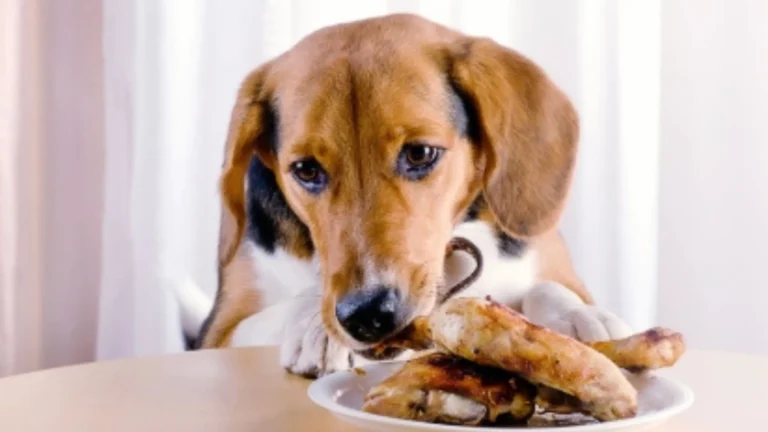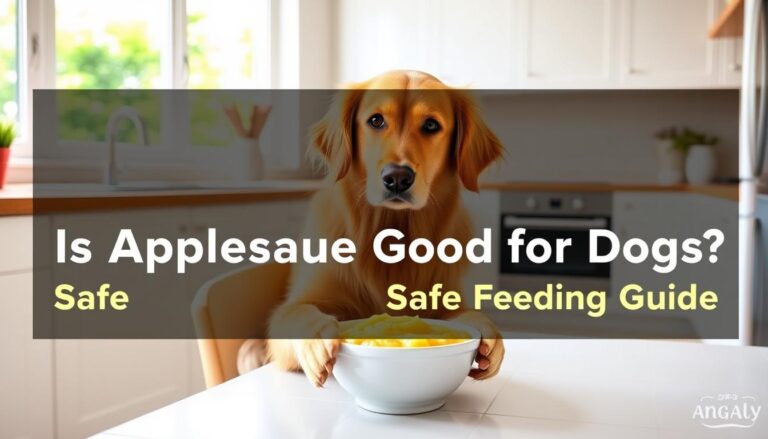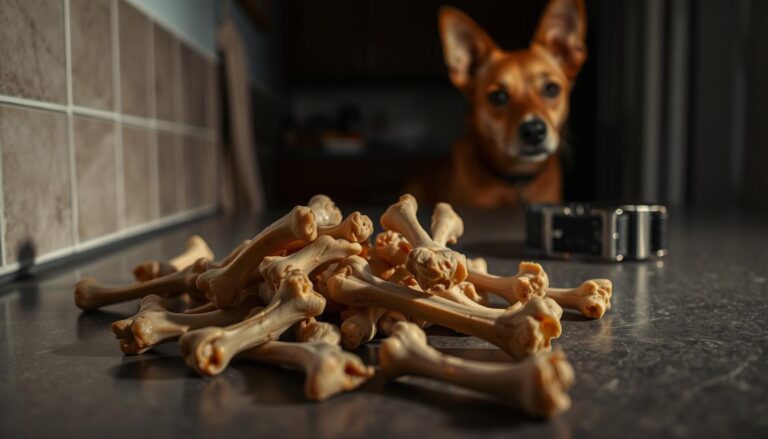Raw Chicken for Dogs: Is It Safe or Harmful?
Every dog owner wants the best for their pet. The debate over raw chicken for dogs is intense. It’s crucial to choose a diet that’s safe and nutritious for your dog.
When it comes to pet food, safety is key. Raw chicken might be good for your dog, but it’s not a simple choice. You need to do your homework and get advice from experts.
More and more dog owners are looking for different ways to feed their pets. Raw diets are popular because they seem more natural. But, is it safe to give your dog raw chicken?
This guide will dive into the world of raw chicken for dogs. We’ll look at the science, benefits, risks, and safety tips. Our goal is to help you make the best choice for your dog.
Table of Contents
Understanding the Raw Chicken Debate for Dogs
Dog nutrition has changed a lot over time. Your dog’s diet is more complex than you might think. The shift from wild hunting to modern kitchens shows how dogs adapt to new diets.
The Evolution of Dog Diets
Dogs came from wolves, but domestication changed their diet needs. Today, dogs can eat a variety of foods thanks to their strong digestion.
- Wolves mainly ate raw meat and bones
- Domestic dogs now eat human food
- Genetic changes helped them digest more foods
Modern Dogs vs. Wild Ancestors
Today’s dogs are very different from wolves. While wolves only ate raw meat, dogs now eat many different foods.
| Characteristic | Wild Wolves | Modern Dogs |
|---|---|---|
| Primary Diet | Raw Animal Protein | Mixed Nutrition |
| Digestive Adaptability | Limited | Enhanced |
| Nutritional Variety | Restricted | Extensive |
Current Scientific Perspectives
Veterinary nutritionists are still studying raw pet diets. They find that dogs can digest raw foods, but each dog is different. It’s important to talk to a vet before changing your dog’s diet.
“Understanding your dog’s unique nutritional requirements is key to maintaining optimal health.” – Dr. Sarah Richardson, Veterinary Nutritionist
Potential Benefits of Raw Chicken for Dogs
Raw chicken can be a nutritional powerhouse for your dog’s diet. It offers several key advantages that support your pet’s health and wellness.
The protein in raw chicken helps build and repair muscles. It provides high-quality protein that boosts lean muscle mass and energy.
- Rich in essential amino acids
- Supports muscle development
- Provides natural nutrient profile
Raw chicken also contains important nutrients for your dog. These include:
- Vitamin B6 for metabolism
- Phosphorus for bone health
- Selenium to support immune function
Some say raw chicken can improve your dog’s dental health. The natural chewing process may help reduce plaque and strengthen teeth.
Feeding raw chicken requires careful consideration and consultation with a veterinary professional to ensure balanced nutrition.
When adding raw chicken to your dog’s diet, start with small portions. Watch how your pet reacts. Each dog’s nutritional needs are different, so getting personalized advice is key for their health.
Health Risks and Safety Concerns
Feeding raw chicken to dogs can be risky. It can carry harmful bacteria that threaten both dogs and people. It’s important for pet owners to know this.
Salmonella is a big worry with raw chicken diets. These illnesses can cause serious health problems for pets and their owners.
Bacterial Contamination Risks
Raw chicken often has harmful pathogens. These can cause serious infections. The main risks are:
- Salmonella
- Campylobacter
- E. coli
- Listeria
Choking and Injury Hazards
Raw chicken bones are dangerous for dogs. They can cause:
- Potential choking
- Internal punctures
- Digestive tract blockages
- Dental damage
Cross-Contamination Issues
Handling raw chicken for dogs requires great care. You must avoid spreading harmful bacteria around your home.
| Contamination Risk Area | Potential Consequences |
|---|---|
| Kitchen Surfaces | Bacterial spread to food preparation areas |
| Cooking Utensils | Potential transmission of foodborne illnesses |
| Pet Feeding Areas | Risk of bacterial growth and infection |
Veterinary professionals strongly recommend taking extreme precautions when considering raw chicken diets for dogs.
Nutritional Value of Raw Chicken for Dogs
Raw chicken is a key part of a dog’s diet, offering important nutrients. Knowing what’s in raw chicken helps you choose the best food for your pet.
The main benefits of raw chicken for dogs include:
- High-quality protein for muscle development
- Essential amino acids
- Important minerals like selenium and zinc
- B vitamins crucial for metabolic functions
Even though raw chicken is nutritious, it can’t be the only food for dogs. They need a mix of foods for a balanced diet.
| Nutrient | Amount per 100g Raw Chicken | Benefit for Dogs |
|---|---|---|
| Protein | 18-20g | Muscle growth and repair |
| Selenium | 20-25 mcg | Immune system support |
| Zinc | 1-2 mg | Skin and coat health |
| Vitamin B6 | 0.3-0.5 mg | Energy metabolism |
Creating a raw pet diet needs careful planning. Consult with a veterinary nutritionist to make sure your dog gets everything they need.
Dogs are different, with needs based on age, breed, and health. Adding other proteins and nutrients to raw chicken is important for their health.
Safe Handling and Storage Practices
Keeping raw chicken safe for your dog is crucial. You need to handle raw meat carefully and store it properly. Raw chicken can have harmful bacteria that can affect both pets and humans.
Understanding how to prepare and store raw chicken is key. The way you handle raw chicken can help prevent foodborne illnesses.
Essential Storage Guidelines
Storing raw chicken right is important. Here are some essential tips:
- Store raw chicken in sealed, leak-proof containers
- Keep raw chicken refrigerated at 40°F or below
- Use refrigerated raw chicken within 1-2 days
- Freeze chicken at 0°F for longer storage periods
Preparation Best Practices
When preparing raw chicken for your dog, follow these steps:
- Use dedicated cutting boards for raw meat
- Wash hands thoroughly before and after handling
- Use separate utensils for raw chicken preparation
- Thaw frozen chicken in the refrigerator
Cleaning and Sanitization
Cleaning well is key to avoid cross-contamination:
| Area | Cleaning Method | Frequency |
|---|---|---|
| Cutting Surfaces | Hot, soapy water | Immediately after use |
| Utensils | Dishwasher or hot sanitizing solution | After each use |
| Food Preparation Area | Disinfectant spray | Before and after raw meat handling |
“Safe handling of raw meat is not just a recommendation, it’s a responsibility for pet owners.” – Veterinary Nutrition Experts
Being careful with raw meat and keeping it stored properly is vital. It keeps your dog safe and prevents foodborne risks.
Different Parts of Raw Chicken and Their Safety
Thinking about raw chicken dogs as a food option? It’s key to know the safety of different chicken parts. Not all chicken parts are safe for your furry friend.
Raw chicken can be good for your dog, but you need to look at each part’s risks and benefits:
- Chicken Breast: Lean and full of protein, usually the safest raw chicken for dogs
- Chicken Wings: Have more fat and can be a choking hazard from bones
- Chicken Drumsticks: Give muscle meat but need careful bone handling
- Chicken Organs: Full of nutrients but should be given in small amounts
Raw chicken dogs need careful planning. Vets say choose high-quality, fresh chicken from trusted sources to lower bacterial risks.
Start with small amounts of raw chicken parts in your dog’s diet. Watch how your pet reacts. Some dogs might have digestive issues or allergies to certain chicken parts.
Always talk to a vet before big changes in your dog’s diet.
Signs of Raw Chicken Intolerance in Dogs
Keeping your dog safe from foodborne illnesses is key when adding raw chicken to their diet. Some dogs might not react well and need quick vet care. Knowing the signs of illness can keep your pet healthy.
Dogs can have bad reactions to raw chicken. Spotting these signs early can stop bigger health problems.
Common Symptoms of Raw Chicken Intolerance
- Digestive Distress: Persistent vomiting or diarrhea
- Sudden loss of appetite
- Unusual lethargy or weakness
- Abdominal pain or bloating
- Excessive gas or gurgling sounds
Critical Warning Signs Requiring Veterinary Care
Some symptoms are more serious and need vet help right away:
- Blood in stool or vomit
- High fever
- Severe dehydration
- Prolonged vomiting lasting more than 24 hours
- Signs of extreme pain or distress
If you see these signs, call your vet fast. Quick action is vital for your dog’s health.
“Early detection and prompt action can prevent minor digestive issues from becoming serious health challenges.” – Veterinary Nutrition Experts
Always talk to a vet if you’re unsure about your dog’s diet. They can give advice that fits your pet’s health needs.
Alternative Protein Sources for Dogs
When looking into dog nutrition, pet owners find many protein options besides raw chicken. Knowing these alternatives helps create a balanced diet. This ensures your dog stays healthy and full of energy.
Raw pet diets include more than just chicken. Here are some protein-rich foods that are great for your dog:
- Lean Meats: Turkey, beef, and lamb are excellent protein sources
- Fish: Salmon and sardines are full of omega-3 fatty acids
- Organ meats like liver and kidney
- Eggs (cooked or raw)
Plant-based proteins can also be part of your dog’s diet. Some good choices are:
- Quinoa
- Lentils
- Chickpeas
Commercial dog foods made by vet nutritionists have a wide range of proteins. These diets are balanced and made with care. Always talk to your vet before adding new proteins to your dog’s diet.
Using different protein sources is key to good dog nutrition. Each type of protein offers special benefits. They help keep your dog’s muscles strong, their energy up, and their health in check.
Raw Chicken vs. Cooked Chicken for Dogs
Many dog owners worry about the safety of their pets’ food, especially when it comes to raw chicken. Choosing between raw and cooked chicken affects your dog’s diet and health.
Raw chicken has benefits that cooking might lose. Dogs can digest raw meat better because the natural enzymes are still there. This diet is closer to what dogs ate in the wild, offering:
- Higher protein bioavailability
- Increased nutrient retention
- More natural digestive process
Cooked chicken, however, is safer from harmful bacteria found in raw chicken. Cooking kills off pathogens that could make your dog sick. Veterinary experts often recommend cooking chicken to minimize pet food safety risks.
| Preparation Method | Bacterial Risk | Nutrient Preservation |
|---|---|---|
| Raw Chicken | High | Maximum |
| Cooked Chicken | Low | Moderate |
It’s important to consider your dog’s health, age, and diet when deciding. Talking to a vet can help you choose the best chicken option for your dog.
Guidelines for Transitioning to Raw Chicken
Switching your dog to raw diets needs careful planning. Experts say to start slow with raw chicken. This ensures your dog’s health and happiness.
Here are key steps for adding raw chicken to your dog’s diet:
- Start with small amounts of raw chicken
- Watch how your dog’s body reacts
- Slowly add more raw chicken
- Talk to a vet before big diet changes
Gradual Introduction Methods
Begin by adding a little raw chicken to their food. Slow and steady wins the race in raw diets. A good plan is:
- Mix 10% raw chicken with 90% of their usual food
- Up the raw chicken by 10% each week
- Keep an eye on how they digest and feel
Portion Control Tips
It’s important to control how much raw chicken you give. Your dog’s size, age, and how active they are affect how much they need.
| Dog Size | Daily Raw Chicken Portion | Frequency |
|---|---|---|
| Small Breeds (under 20 lbs) | 2-3 oz | 2-3 times per week |
| Medium Breeds (20-50 lbs) | 4-6 oz | 3-4 times per week |
| Large Breeds (50-90 lbs) | 6-8 oz | 4-5 times per week |
Always think about your dog’s unique needs. Work with a vet to find the best raw diet plan for them.
Conclusion
Feeding raw chicken to dogs needs careful thought about pet food safety and your dog’s health. The path to raw feeding is complex, with many factors to think about. Your vet is key in making this decision for your dog.
Knowing the risks and benefits of raw chicken is important for pet owners. Some dogs do well on raw diets, but others might face digestive issues or more bacteria. Every dog is different, needing special care and advice from a vet.
When looking into raw chicken for dogs, focus on their health and safety first. Keep things clean, watch how your dog reacts to new foods, and be ready for any health signs. Talking to a vet can help you choose the best diet for your dog.
In the end, keeping your pet safe is most important. With the right knowledge, caution, and vet advice, you can make a good choice for your dog’s diet and health.







